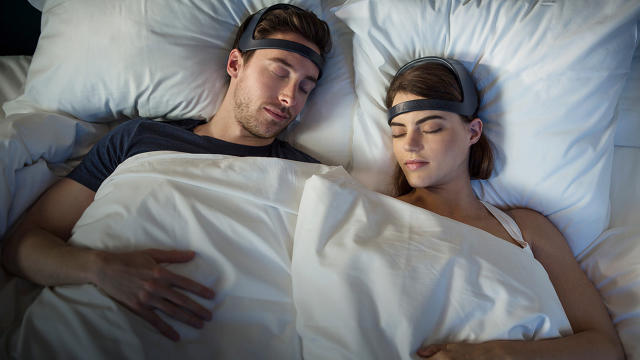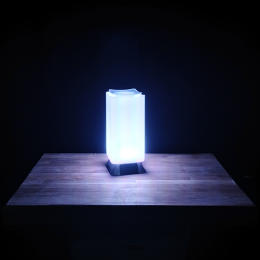How Tech Startups Are Waking Up The Sleep Industry
A whole panoply of new sleep apps, sites, and devices are waking up the digital health industry—and they go far beyond the tracker market.
The digital health sector experienced record highs for funding in the last two years, with 2015 reaching $4.5 billion. According to a recent study, the market for devices that help diagnose and treat the 40 million Americans suffering from sleep disorders is estimated to reach $125.8 million in 2017.
Given this boom, it’s not surprising that investors are taking this industry more seriously. And enterprising consumers are too: A quick search on Kickstarter reveals dozens of inventive, forward-thinking (and downright kooky) sleep products, like complicated-looking travel pillows.
“Consumers are interested in becoming more active in their health care,” says Mitchell Mom, venture lead at Rock Health, a fund dedicated to digital health. Mom predicts that high-deductible health plans will nudge consumers into new habits, who will be spending more money on their health care than before.
“I think devices will help keep consumers engaged and aware of their own health care,” he says. Hopefully, that means a shift from a reactive process (I’m sick, thus I should go to a clinician) to a more proactive one (my inflammation levels are high, I should probably take it easy).
While there’s reportedly been a bit of wearable fatigue, Mom sees more companies focused on what to do with all the information gathered about people’s sleep patterns. “There is a push to do a lot with this data,” he says. “That’s what consumers want.”
Doctors have noticed this trend as well. Michael Breus, sleep specialist and author of Good Night: The Sleep Doctor’s 4-Week Program to Better Sleep and Better Health, has seen a sharp uptick in patients coming to him with their trackers. He’s suspicious of the accuracy of many monitoring models, but he appreciates that it forces people to make a habit of looking at their sleep patterns. Just like Mom, however, he wants to know: What do you do with all the data?
“The more people can present real data and talk about sleep, the better because the public is absolutely yearning for it,” Breus says. In fact, the National Sleep Foundation recently requested that monitoring companies create a set of standards so that consumers can—at the very least—decipher what’s being collected.
That’s what companies like Beddit are trying to do. The company makes a thin mattress sensor that tracks one’s movements, snoring, and environment, then analyzes it and offers a report as well as guidance on how to improve the snooze. Breus, who tests as many devices as possible (“I’ve tried them all,” he says with a laugh) recommends it, along with the S+ sleep sensor (which creates daily charts based on sleep patterns) and the Oura ring (which measures pulse waveforms, heart rates, and body temperature).
“We have finally come to the age where people are interested in their health, more so than any other time in history,” Breus says. “It used to be all about exercise and diet, but sleep deprivation is entering the public vernacular.”
So what else is on the market? Plenty, especially so-called “active” devices that intervene with sleep cycles. There’s the Cereve Sleep System to cool the forehead and soothe “a racing mind,” the Sleep Shepherd, which delivers brainwave sensors and beats to your ears, and Sleepion, a 3-in-1 gadget that emits sounds, lights, and sleep-inducing aromas.
These new startups are using advanced technology, focusing on products that proactively analyze, diagnose, or treat sleep disorders versus merely collecting data. Take, for example, Rythm’s Dreem, a sensor-clad headband that influences brain waves with soft sound stimulations. Founded in 2014, Rythm raised of total of $11 million in funding and now boasts a staff of more than 60.

“Sleep is a very complex topic,” says Dreem cofounder and CEO Hugo Mercier, who envisions the neurological wearable as a personalized device. “You are not sleeping like I am sleeping; your brain is not mine. This product is for everybody.”
Rythm is currently focused on France and the U.S., two top countries that, according to Mercier, suffer from sleep deprivation.
If you’re looking for something a little less intrusive, there’s the wildly popular Sleep Genius. The auditory sleep-aid was originally developed to help lull astronauts to sleep. Now, it’s the No. 1 health and fitness app in the Apple store.
“Our sleep really sets the barometer for other functions: If we’re not sleeping well, it has an impact on our attention, on our mood, on our performance, on our choices, on our relationships, on our communications,” says Sleep Genius cofounder Alex Doman, who studied neurotechnology for 25 years.
As he sees it, without sleep, you can’t tackle any other brain issue. “It was an issue over the course of my career that kept coming up,” he says. “We couldn’t make the kind of progress we needed to [for patients] unless we helped them first resolve the sleep problems. Sleep is really ground zero for our brain performance. “
Doman has been especially surprised by the increase of consumer interest in sleep in the last two years. He’s noticing it grow across media channels, with awareness at an all-time high.
“The sleep industry has been experiencing exponential growth,” he says. People are recognizing that it’s not one thing: It’s not just surface changes; they need to adopt healthy sleep hygiene practices. While the default surface solution used to be popping an Ambien, today, Doman says, “people want to show that they’re proactive” in their health.
For the home-tech market, Lighting Science specializes in lightbulbs designed to mimic the effect of natural light. The company’s new Genesis Lamp, marketed as the “first 24-hour lightbulb” monitors your sleep schedule, then alters the light according to your circadian needs. It comes with quite the stamp of approval: It’s used by both NASA astronauts and soldiers in Afghanistan.

“It’s like standing under the sun and moon,” says Alex Polier, the company’s director of communications, likening the bulb to going back to caveman times. “It’s putting your body back on a natural-lighting cycle, with no artificial light spectrum to keep you up.”
The product, which has been selling well despite only being on the market for a month, speaks to the momentum around the health and wellness trend.
“A lot of companies are investing in home technology,” Polier says. “Everyone’s trying to encourage better sleep in this high-tech age when everyone’s awake all the time. We’re all workaholics, and people are finally tired.”
Exhaustion is what inspired Anna Richardson to create SleeperHero, a battery-powered doll with accompanying storybook. Like a more useful Teddy Ruxpin, the PJ-clad superhero helps children overcome their sleep anxiety. Equipped with two lights—red and green—the transportable plush doll signals when it’s time for young ones to hit the hay.
“It came out of desperation,” says Richardson, who found herself tormented by two restless young children who were “horrible sleepers.”
The company is doing so well with young families that it plans to expand its collection: more books, more dolls, and some gender-specific editions. “Families are so busy and doing so much that sleep is the one thing that gets pushed aside,” Richardson says. “We help get families on a routine.”
And then there’s the ever-growing thirst for more knowledge on the topic.
As the public searches for more answers to sleep-deprivation dilemmas, one company decided to act as media publisher in addition to home supplier. Casper, now practically synonymous with the modern mattress, launched its own publication in June 2015. Named Van Winkle’s, after the sleepiest folktale hero in American literature, the website is dedicated to all things sleep—product reviews, interviews, culture news, and everything in between.
While Van Winkle’s is an independent media property, it serves as an extension of the company’s grand vision. Casper’s cofounder and chief creative officer, Luke Sherwin, sees Van Winkle’s as a long-term bet, one that will help create a unified lifestyle category. “Our vision is to do for sleep what Nike did for fitness,” Sherwin said of the company’s portfolio approach.
So far, the response from readers has exceeded expectations, garnering over half a million monthly uniques—with a staff of just four. “There’s a legitimate increase in curiosity [about sleep] and about the ways that that subject insects other ones,” he says.
As Doman puts it, “Sleep awareness is in the global consciousness,” and there’s no turning back. Today’s consumers now look to maintain a proper sleep balance, perhaps with an iPhone by their bedside.
“We now understand that sleep has a real impact on our health, and not just our short-term performance, but our longevity,” he says. “And people are looking for solutions.”
Fast Company , Read Full Story
(83)


